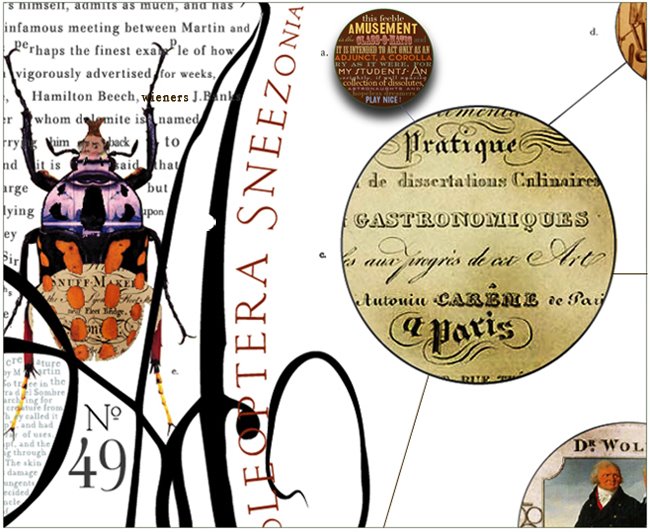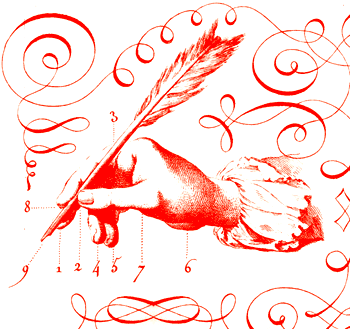By William Oliver

Over a 20-year career, David LaChapelle has carved a name for himself as an enfant terrible of pop culture photography. The cutting, acerbic wit and layered symbolism in his celebrity portraiture, fashion and advertising images is seen as a bolt of honesty—albeit a glamourised and high-gloss one—in an industry known for its false vision of reality.
During the last few years, LaChapelle has moved away from commercial work to focus on fine art. While retaining his unique visual style, this new direction highlights his interest and understanding of both contemporary practice and art history.
While in London working on his current exhibition, “The Rape of Africa” at gallery Robilant + Voena (until 25 May), The Art Newspaper met up with the infamous photographer to discuss the show, falling out of love with fashion and the new path his work is taking.
The Art Newspaper: What is your interest in fine art photography?
David LaChapelle: The fact that so much contemporary work is conceptual. When you are looking at it you know that it can only be art because it couldn’t be anything else, but it can be difficult to unravel. That is something that activates me; I want to make work that that has a language people can read.
TAN: Although you have had a successful career shooting for advertising and magazines, you actually began in galleries. Why did you move into commercial work?
DLC: I started showing in galleries in the early 1980s in New York City. I felt successful because my friends liked the work, and some of my shows were well attended, but my last gallery show of that period, in 1991, really wasn’t. At that point, when you’re not reaching an audience, you have to look for other ways of getting your work seen.
TAN: Why do you think the show was not well received at that time?
DLC: To be honest I was naïve about the whole process back then, I didn’t even know that there was a hierarchy of galleries. I was showing in SoHo but the gallery itself was completely off the map. I became a little disillusioned, had met Warhol and was shooting for Interview. I began to treat the magazine as my gallery; if people ripped out the pictures to keep, that to me was like a collector or a museum taking the works.
TAN: After a long-standing career shooting celebrity portraits you have now moved back into fine art. Your latest exhibition centres on one image, The Rape of Africa. What was your idea behind that photograph?
DLC: I visited the National Gallery and began looking at Botticelli’s Venus and Mars. I wasn’t in love with Botticelli in the way I was in love with Michelangelo, but I saw this painting and was so excited by its personification of the gods in a figurative way. Having people represent war, greed, love and beauty, and the fact that they were post-coitus, seemed incredible. It occurred to me that the painting could be contemporary; the ideas in it still seemed so relevant today; as fast moving as our world is, we haven’t progressed with our morality or spirituality.
The use of Africa in my photograph is about it being the cradle of civilisation, the idea of Mother Earth and Mother Africa. The production of gold in Africa is destroying both the society and the country itself but continues because of our obsession in the West. The human suffering and the cost to the environment are incalculable. We are degrading our mother and we are raping Mother Earth in our quest for financial security, but while doing so we are ensuring our own insecurity.
TAN: Why did you choose Naomi Campbell as the model for Venus?
DLC: Botticelli used Simonetta Vespucci as his model for Venus. She was famous in Italy at that time for being a great beauty, and Naomi Campbell is a great beauty of our time. I wanted to twist the idea slightly and talk about greed and wealth etc. It was not just about Africa; Naomi in a way was the representation of Africa even though she is not actually from Africa. I looked at her and thought it didn’t matter, I didn’t need to have a woman from Africa to represent what I was trying to say.
TAN: Will The Rape of Africa form part of a series?
DLC: No, this picture is a stand-alone work. I am producing a lot of other pieces that are a series, but they are taking longer and longer to complete. Not because I am getting lazier with my production, but as I move forwards I am applying further layers to the narrative and symbolism in the imagery, and that process adds time.
TAN: Have you now fully made the move from fashion into fine art?
DLC: When I first left [fashion] there were a lot of reasons. I felt I had said all I could say within the format of the images I was making at that time and I had started to come up against a few problems from clients surrounding my ideas. I shot the series Jesus is my Homeboy for i-D, a hip contemporary style magazine, but they had issues with it because of the depiction of religion. I shot something for Italian Vogue that they had problems with because of the destruction in the pictures, and the fact that it was on newsstands around the time of hurricane Katrina. Also I wasn’t interested in the same things I was 25 years ago; I didn’t want to meet any new pop stars. It occurred to me I didn’t have the creative freedom I wanted. Fashion and magazines as a vehicle to reach a broader audience had reached an end for me, so I looked for other outlets.
When I first started the art pieces I said I would never go back to commercial but the studio became really quiet and I started to lose touch with my people. What I do is really collaborative, there is a huge amount of work that goes into the set building and designing. People think it is all done digitally but that is a fallacy. Really, because of this, I have done some commercial work recently but my real focus is now on my art.



No comments:
Post a Comment